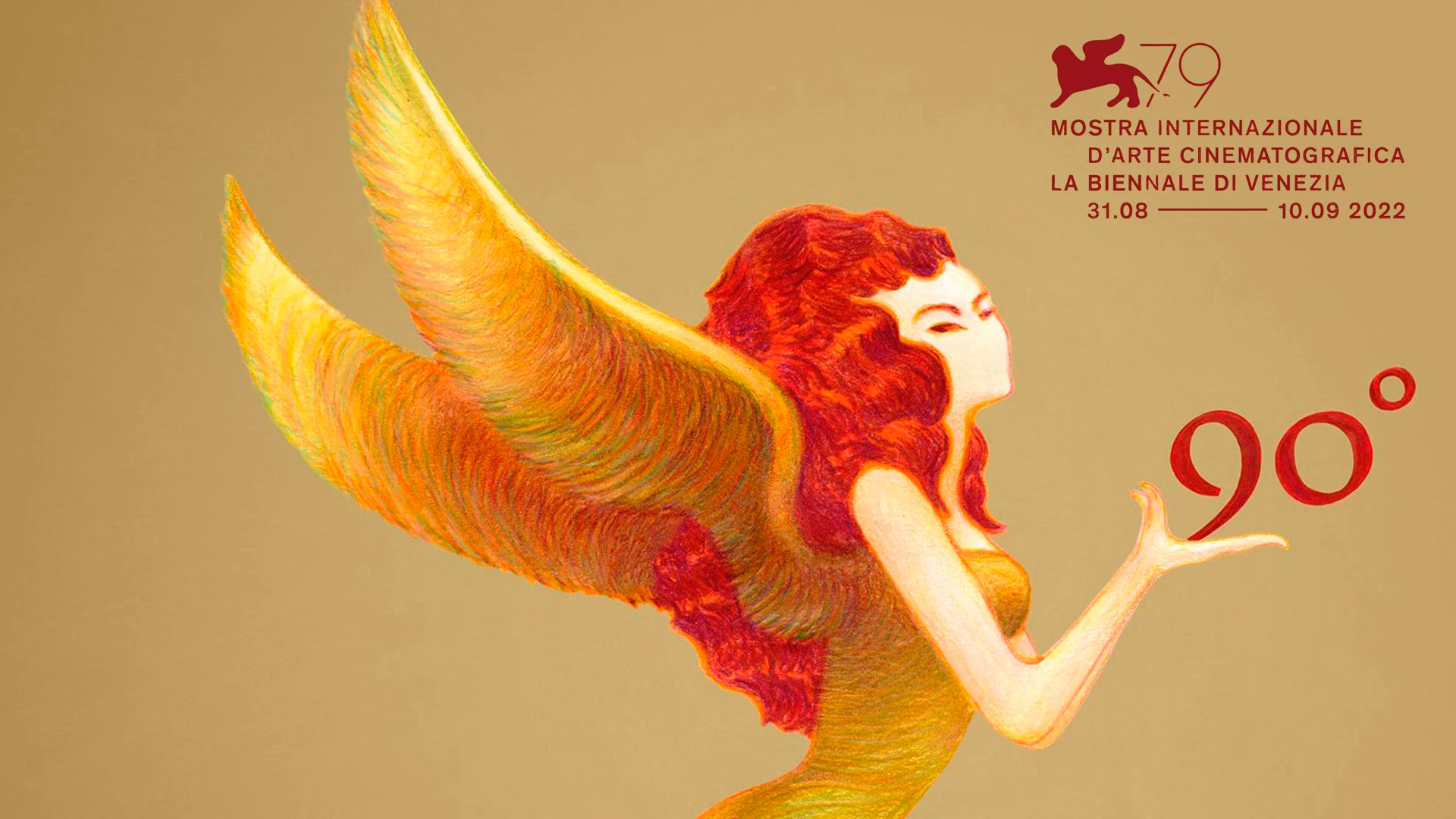
Mostra del Cinema in Venice
Publié par Birgit Beumers - 20 septembre 2022
Catégorie(s): Cinéma, Expositions / Festivals
Death in Venice: The Competition of the Mostra del Cinema in Venice, 31 August – 10 September 2022
This year’s competition programme at the 79th Mostra del Cinema in Venice offered a programme with extraordinary performances, beautiful narratives and exciting visuals, which is sadly not reflected in the award of the Golden Lion – but about that later. What is tantalizing is that so many of the films touched upon the theme of death, screening on the very same Lido where Thomas Mann’s Death in Venice unfolded, and in a building along the road from the now abandoned Hôtel des Bains where his Gustav von Aschenbach resided, and died.
The festival opened with Noah Baumbach’s White Noise, a Netflix-produced feature adapted from Don DeLillo’s novel and starring Adam Driver and Greta Gerwig as Jack and Babette Gladney. Driver plays a university professor who specialises in Hitler studies, whilst Gerwig plays his esoteric wife who rears their numerous children from diverse relationships. The brilliant acting is largely responsible for bringing out the satirical aspects in the story, in which the Gladneys voice, and combat, their fear of death in general, and more specifically in the face of a looming catastrophe caused by a chemical incident after a train collides with a lorry – an accident shown in fragments inserted between the continuing shots of the everyday family life at the Gladney household. The film’s pointed comments at modern society are well rendered both verbally and visually in this ideal festival-opener.
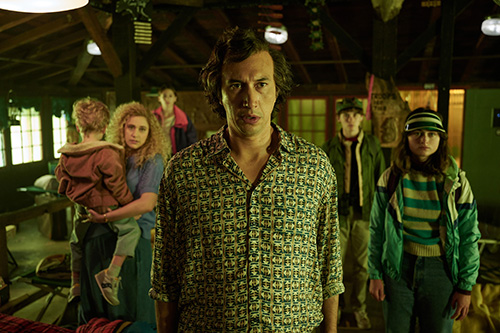
The world in-between
Another competition entry in which a widow ponders her marriage is Frederick Wiseman’s A Couple: this film is based on the memoirs of Sophie Tolstoy as she ponders her own existence after the death of her husband, the great writer Leo Tolstoy. Wiseman prefaces the film with a quote from Seneca about the desire for death while we fear it – a key theme in so many films. The beautifully set monologue of Sophie, performed by Nathalie Boutefeu, more and more reveals her sense of sacrifice and struggle in the face of a lack of recognition. She draws a clear line between words – so important for her writer-husband, and life: as she corresponded with Tolstoy whilst living in the same house, she is acutely aware of the disconnect between narration and life. This divide between words/stories from reality/appearance runs through Alejandro Iñárritu’s Bardo. This film runs at 174 minutes and was produced by Netflix; it is complex and demanding, but an exquisite example of storytelling through association and visualisation as blurs hallucinations, dreams, and visions with reality. Indeed, this is the meaning of ‘bardo’: the world between life and death, the limbo between this world and the other, between reality and dream; a world where fears and hopes become visualised.
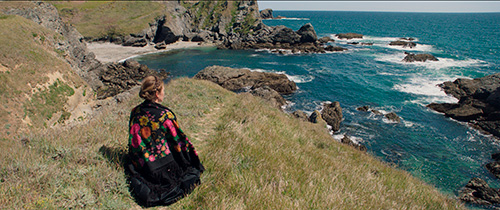
The journalist and filmmaker Silverio Gama returns to his native Mexico before receiving a major international award in his new hometown LA to write his acceptance speech: the need to articulate his life experience in words is one driving force between the unstructured and non-chronological story he tries to wield as he reviews his life for the speech, and relives his experiences during his visit to Mexico. Thus, the film begins with Silverio waiting on a corridor for the birth of his son Matteo: stillborn, the baby continues to haunt his memories throughout the film, which is about the loss of a child but also about the hallucinatory images of Silverio’s meetings with historical figures and contemporaries, real and imagined, and in a real world or in the coma into which he falls after returning to LA. In the liminal state of ‘bardo’, there is no linearity, and the sequence of Silverio travelling on a subway train in LA, carrying axolotls for his son in a plastic bag, is shown once as a dream-sequence and once as a prelude to Silverio suffering a stroke – and after he heard, in words, the story of how his son Lorenzo wanted to take his axolotls to America when they moved there, but the bag burst in his case. Both the traumatic loss of a child and the post-stroke coma create such states of limbo between life and the other world, in which seamless moves between reality and vision/hallucination are possible – and the historical and existential visions that Iñárritu renders with an exquisite touch of magic realism. The grotesque visualisation of Matteo, the stillborn boy, being pushed back into the mother’s womb as he declares his unwillingness to enter this “fucking world” then reads as a way of dealing with the trauma of loss; likewise, when Matteo’s ashes are scattered, the whole family assembles at a beach, while the visual sequence shows a miniature version of the baby released into the sea, where it turns into an axolotl, suggesting another parallel to the subway scene. Maybe Bardo is self-reflexive (or self-indulgent, as many critics would have it) but the film questions the relationship between reality and visual media, where dreams and visions are more real. Iñárritu and his cinematographer Darius Khondji magnificently play with reflecting surfaces and mirrors, reminiscent of Andrei Tarkovsky’s work, especially in the scene of levitation of Silverio’s wife at the moment he suffers the stroke.
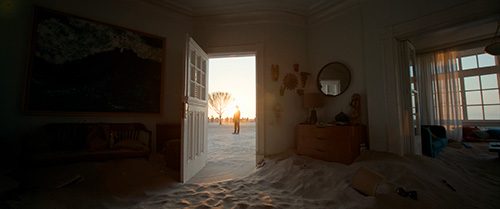
Another competition entry addressing death, and the inability to cope with the loss of a loved one, is Joanna Hogg’s The Eternal Daughter. Tilda Swinton stars in a double role as mother and daughter: the daughter wants to write a film script about her mother who has just passed away, trying to come to terms with the loss. Elements of the uncanny run through the film, set in a remote English country house in a foggy forest and haunted by weird noises. Hogg skilfully uses window panes and mirrors to highlight the daughter’s delusion of her mother’s presence, and frames the story as a horror movie in which nothing unnatural happens, yet the surrounding world of a remote castle as lieu de memoire appears haunted to the mourning daughter. Unable to let go of her mother, she acts strangely as she tries to overcome her writing block. This is an exquisite piece of cinema and a stunning performance of Tilda Swinton, sadly not honoured here with an award.

A cinematically unconvincing, even if narratively strong film is Alice Diop’s Saint Omer, co-written by the well-known novelist Marie Ndiaye. The film’s strength lies without a doubt in the convincing script and the dialogue. The performances of Kayije Kagame as Rama, and Guslagie Malanda, the latter playing the role of the accused Laurence, are flat, and the visual rendering of the story that unfolds largely in the courtroom is also not impressive, showing Diop’s documentary background in her inability to translate in powerful visual terms the motivations for Laurence’s murder of her 18-month-old baby. The trial suggests that her migrant background is responsible for this act, and the film suggests a parallel to the life of Rama. Whether Laurence’s sense of not fitting in with society is internal or external remains – apparently deliberately – unresolved.
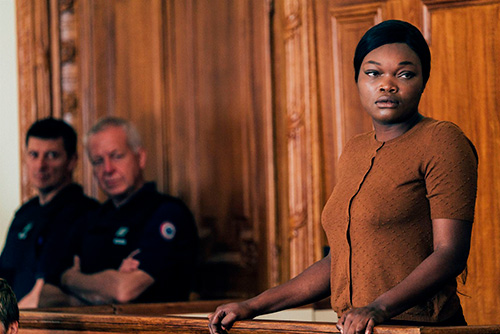
Death-drive
Darren Aronofsky’s The Whale addresses the topic of death in two ways: the inability to come to terms with the loss of a close person, and the wish to die. Charlie (a comeback to the silver screen by Brendan Fraser) is overweight, massively; he cannot leave his home, and barely gets up from the sofa, whence he conducts online classes on writing skills – web camera off. He has left his wife and child about ten years ago, after realising his love for Adam, who has died. Unable to come to terms with the death, Charlie has given up on himself, and even refuses treatment. Adam’s sister Lucy, a professional nurse, is his only support: she looks after him as Charlie claims he has no money, yet he has tucked away his savings made from the teaching job for his daughter Ellie, whom he has not seen for years and with whom he tries to re-connect. Having wasted all opportunities in life, Charlie wants to die, but he also wants to see his daughter again. Aronofsky creates a tense drama with this film essentially set in a single apartment, driving home the effect of seclusion on a person’s psyche.
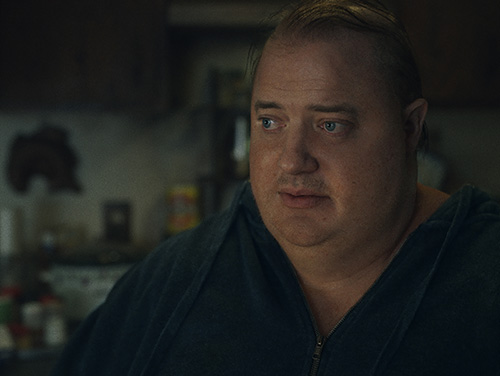
Such a life between two worlds is a driving force in Andrew Dominik’s Blonde, where Marilyn Monroe’s childhood traumas ultimately push her towards death. The film places the reason for Monroe’s isolation and depression clearly in her early childhood, and suggests the creation of the persona of MM as a way to overcome childhood trauma and to leave behind Norma Jane. Provocative scenes, such as a rape during the casting at the studio, a forced abortion, and the sexual encounter with president Kennedy, along with her increasingly delirious perception of the world that surrounds her, make this probably one of the most controversial festival films – and one with a stunning performance of Ana de Armas.
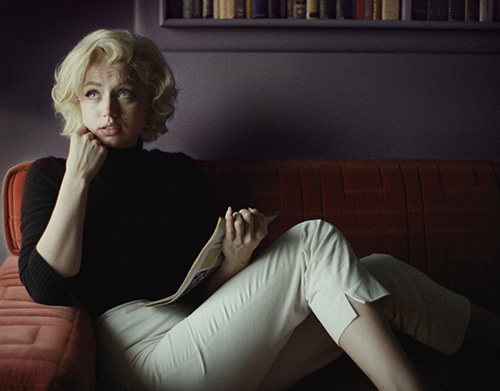
Other competition films dealt with a death-drive more indirectly, through increased aggression, dissatisfaction with reality, and potential for violence. French playwright Florian Zeller’s The Son is an amazingly diligent exploration of the misery of an ex-couple when their son goes through depression and they attribute his condition to their separation, not realising that love alone cannot cure him. The film addresses the teenager’s inability to cope with a reality that does not match his ideal, but also the danger of ignoring what is ultimately an illness. Playwright, scriptwriter and filmmaker Martin McDonagh’s The Banshees of Inisherin is preoccupied with death also, in a historical setting during the Irish civil war and a spatial setting on the Aran islands. The fine and ironic dialogue highlights the absurdity of life here, as once did J.M. Synge’s plays, and this won McDonagh the Best Screenplay award. The excellent performance of Colin Farrell (Best Actor) and Brendan Gleeson brings out the island traditions, where entropy reigns, and where only the mainland offers a real change, and where deaths happen as predicted by an old woman. Another Netflix production is Romain Gavra’s Athena, co-written with Ladj Ly. The film relies on a strong script and resonates with Ly’s Les Miserables, which also scrutinized police violence. Athena is a fictitious suburb, where the film follows three brothers: one has served in the army, the other is a victim of alleged police violence, and the third is the leader of the insurgents in the neighbourhood. This is an action movie with a story that is quite predictable, but the film highlights the potential for extreme violence as a reaction to media propaganda and manipulated images.
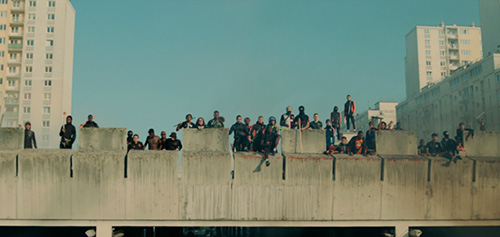
Playing with life, with death
Such manipulated images and use of social media are also at the core of Todd Field’s Tár, where they can make and unmake a career. The female conductor Lydia Tár, played by Cate Blanchett (who received for her performance the Best Actress award) got her job at the Berlin Philharmonic Orchestra by being introduced to the right people. She has made it to the top, and holds her position there as long as she stays in control – even if her private live (she is a lesbian, whose partner Sarah, played by a fabulous Nina Hoss, raises their adopted daughter) could potentially make her vulnerable. After an “attack” (she actually just falls) when she follows the Russian cellist Olga, who fascinates her, she is visibly a “victim” and increasingly loses control. Doctored footage on social media of her workshop methods serves as evidence against her; emails and negative references for a former student who later committed suicide; and the resignation of her PA whom she neglects to promote ultimately destroy her career. The film tells a fictional like the biopic of the fall and rise of a female conductor. Tár falls very low, and social media play a vital role in her downfall, showing the power of word and images, truthful or manipulated.
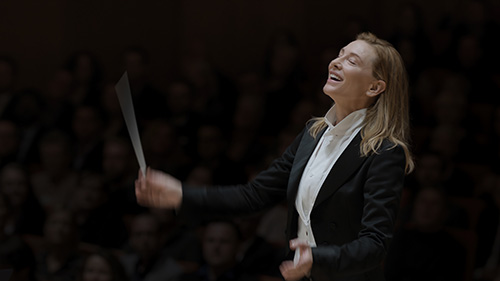
Italy’s home star, filmmaker Luca Guadagnino won the Silver Lion for Best Director for his film Bones and All. A film about cannibalism, it treats occurrences of man-eating as an illness rather than as the basis for a horror film. There is blood (and all), but the focus is on the relationship of two young people who try to fight the disease: Maren (played by Taylor Russell, who received the Marcello Mastroianni Award) cannot suppress her urge, until she finds her mother self-mutilated in an institution; Lee has killed his father in an act of defence and devoured his corpse, bones and all. The film veers between an action movie and a romantic story, where the emergence of more cannibals is the main threat.
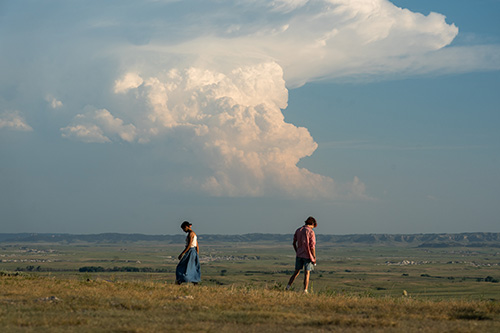
Death, of two women who cannot face the separation from their beloved, drives Jafar Panahi’s No Bears, the winner of the Special Jury Prize. This is a truly exquisite film, where Panahi plays himself as a filmmaker in a remote village near the Turkish border, directing remotely a semi-documentary story of an Iranian couple trying to leave for Europe by obtaining false papers. In the meantime, he is staying in a closed small community, and with his camera exposes both the backwardness of the Iranian village, but also the felt threat of the medium of the camera in the village, as he is suspected of having taken a picture of an unmarried woman with a lover. Eventually, Panahi is forced to leave the village: his projects on both sides of the border have failed, and the intervention of the camera has in both cases brought only devastation.
The Golden Lion: a documentary…
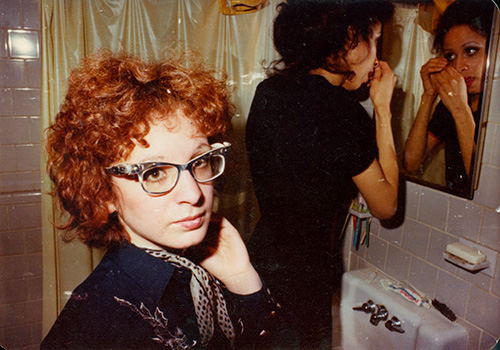
Amidst a whole host of worthy fiction films, it was a documentary that garnered – only for the second time in history – the main award in Venice: Laura Poitras’ All the Beauty and the Bloodshed. Poitras is no doubt an extraordinary documentarist who intensely works on her projects over years, as is evident with her Oscar-winning Citizenfour (2014) about whistle-blower Edward Snowden. The new film concerns the photographer and activist Nan Goldin, whom Poitras observed and interviewed since 2019. All the Beauty and the Bloodshed mixes episodes from Goldin’s career as photographer – including images from her slide shows, such as The Ballad of Sexual Dependency (1986) portraying gay subcultures – with her activism and her role in the advocacy group P.A.I.N. (Prescription Addiction Intervention Now), which she founded in 2017. P.A.I.N. has exposed the financial support lent by Purdue Pharma, the maker of the prescription-only painkiller OxyContin that contains opioids and leads to addiction, to major art galleries. Through a range of protests and actions, several of them filmed and integrated into the documentary, Goldin has fought for the removal of the name of the Sackler family that owns Purdue from major art galleries of the world, including MOMA, the Guggenheim, the Tate and the Louvre. All the Beauty and the Bloodshed is a film by a woman filmmaker about a woman activist/photographer who has fought for the visibility of those marginalised in modern-day America and who has scored a victory in achieving the removal of the Sackler name from numerous collections that have benefitted from their donations. It is, no doubt, a laudable story. Whether it is the cinematic achievement or the political statement that makes this the “best film” remains, at least for me, questionable.

